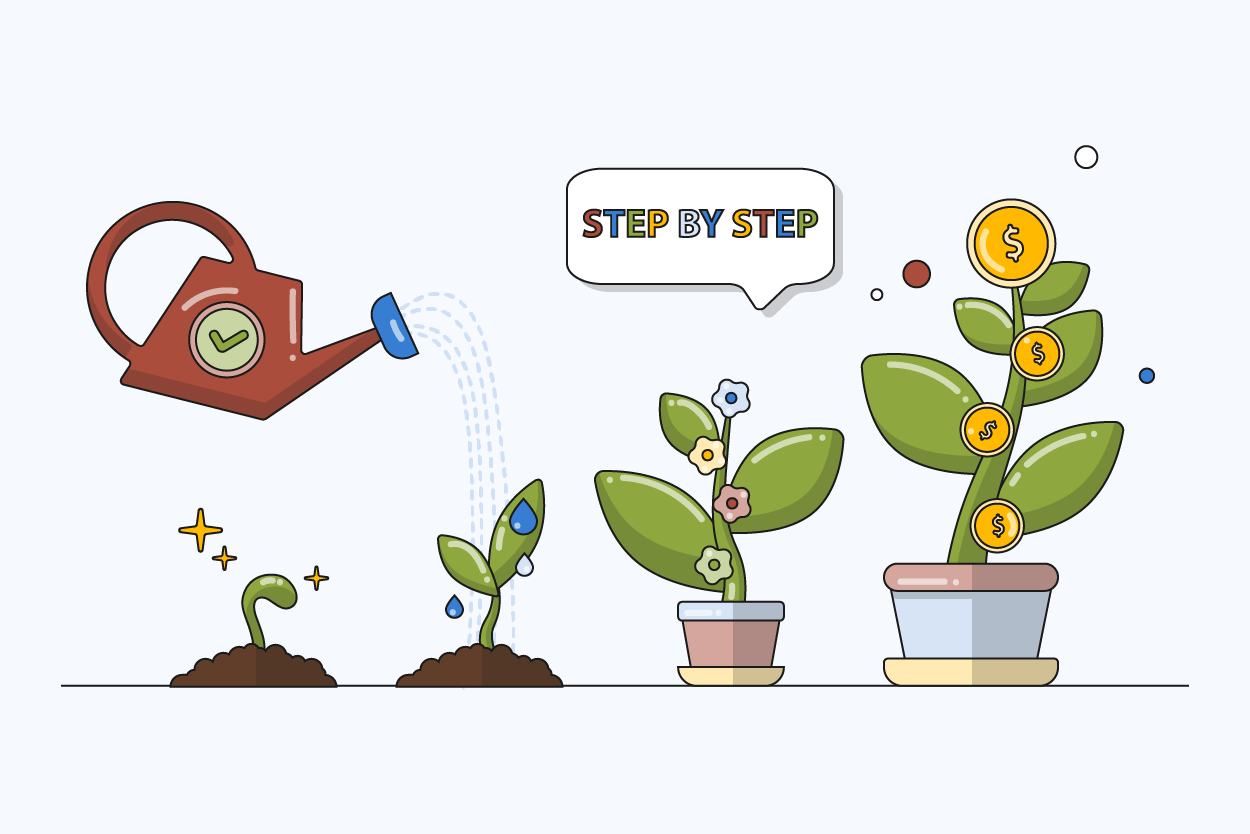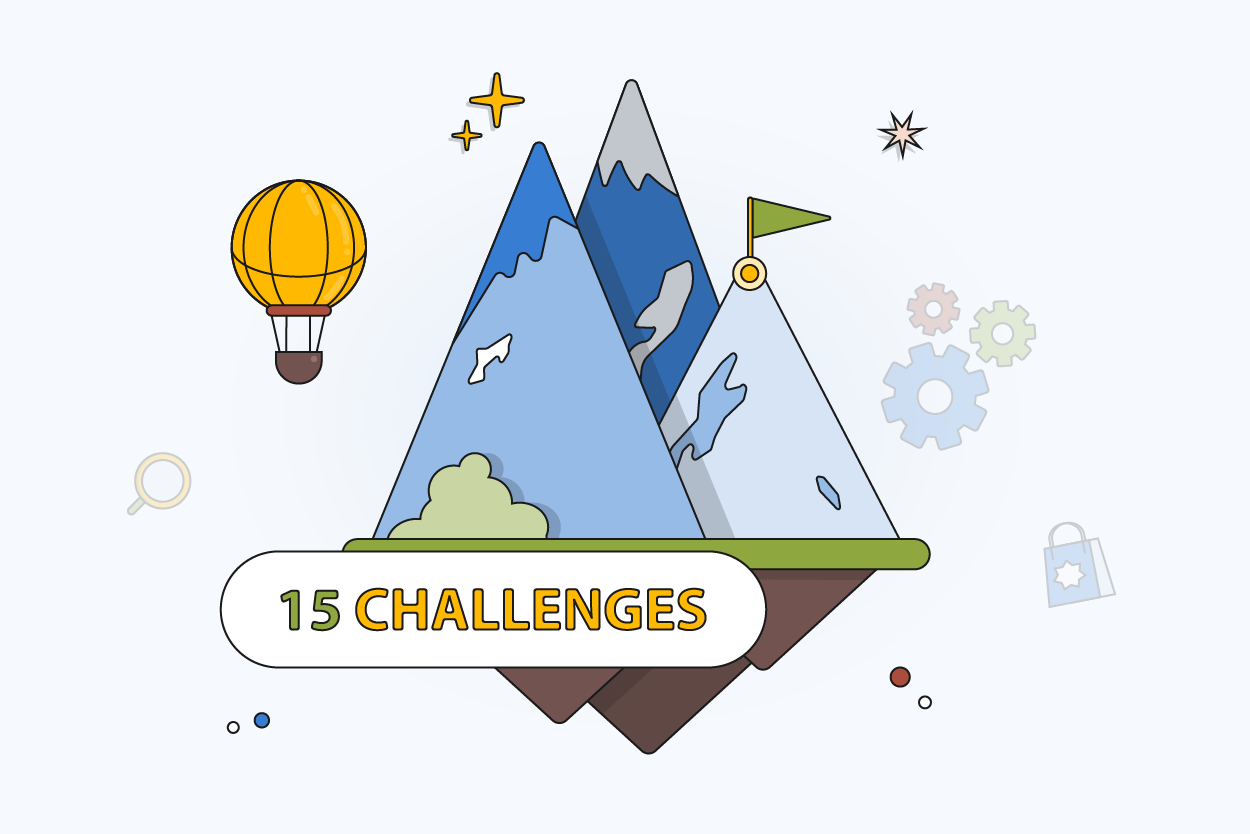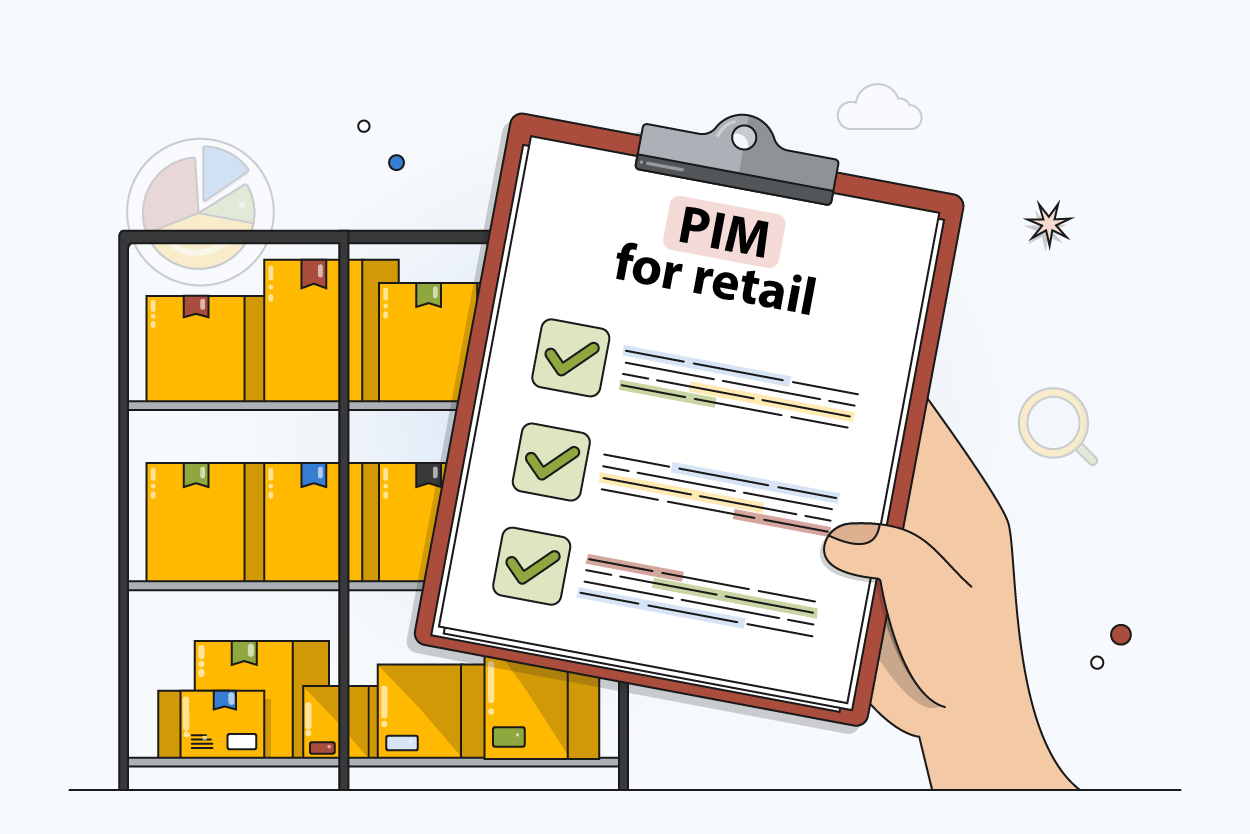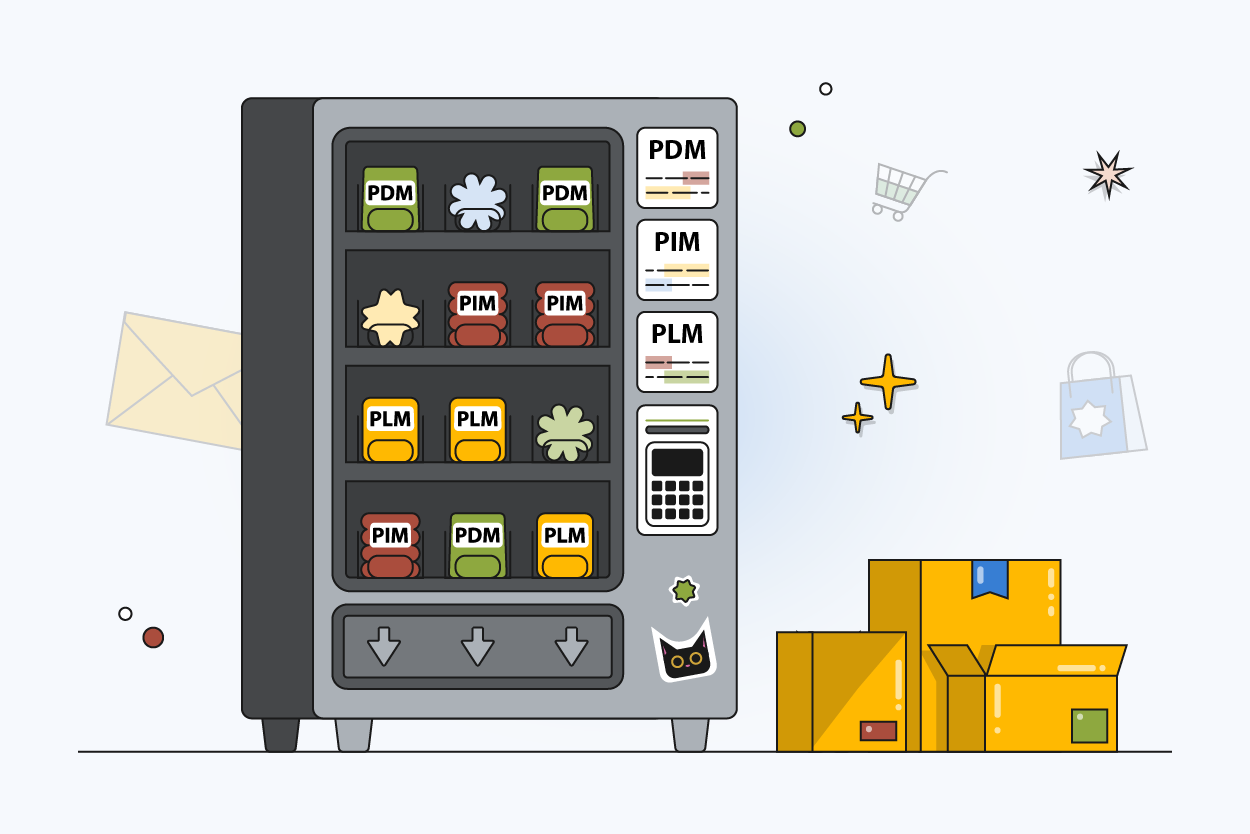Product Development Life Cycle: Your Path to Success
Author name: Mark Chickering

Have you ever been to an amusement park and seen a glass blower creating collectible spun glass figurines? It's mesmerizing, isn't it?
The process is not so different from the Product development life cycle. You start with an idea that is raw and malleable. But then, through meticulous shaping, refining, and evaluating - bit by bit - your product begins to take form.
This post takes you on that journey; the painstaking yet rewarding expedition from concept to customer. We'll explore the product development process as we delve into strategies for ideation and validation in this constantly evolving market. Uncover how prototypes are built early in the development cycle for user feedback before products are added to the product portfolio and full-scale production commences and products enter the growth stage..
The product life cycle is a never-ending process, as market dynamics shift and new insights are gained. It requires continuous improvement and adaptation, a commitment to the product development cycles and a proper marketing strategy. This is needed to avoid the decline stage and to meet the ever-changing needs and preferences of customers throughout the life cycle stages.
Table Of Contents:
- The Stages of the Product Development Life Cycle
- Key Players in the Product Development Life Cycle
- The Importance of a Product Development Strategy
- Planning and Ideation in the Product Development Life Cycle
- Market Research and Analysis in the Product Development Cycle
- Conclusion
- FAQs in Relation to Product Development Life Cycle
The Stages of the Product Development Life Cycle
Comprehending each period of the product development lifecycle can aid you in constructing items that are more likely to thrive in today's competitive atmosphere and enjoy a longer product life cycle. Let's explore these stages, using key stats and relevant links for a better understanding.
Developing and Validating an Idea
The journey starts with developing a unique product idea. This is called product development. This creative process requires innovative thinking, often inspired by existing solutions or potential products worth pursuing. Once an idea is formed and before the product development process, it needs validation to make sure it fits into your product portfolio.
To validate your idea effectively, listen closely to customer feedback from existing customers and even social media channels - their input could be crucial in shaping initial product concepts. Understand the needs of your target audience while your development team evaluates the potential of a product idea. Perform competitor analysis,
Building a Prototype to Validate Market Fit
If the product idea gets green-lit after screening ideas phase, we start building prototypes—a critical step towards achieving that perfect product-market fit. Prototypes give potential customers something tangible they can interact with while giving us invaluable user feedback.
A successful prototype should resonate with our target audience and offer some sort of competitive advantage over similar offerings on the market. We use this information during this development stage as well as later when preparing marketing campaigns for our final product launch.
Growth Stage: Refining Your Product Feature Set
In terms of product life, the growth stage is where your baby starts to mature. We analyze customer feedback and other success metrics, making necessary changes for a better user experience. It's during this phase that we perfect our product features based on what we learned from earlier testing.
This development strategy is all about creating a solid foundation for growth. Creating a roadmap that charts our goals and the steps necessary to achieve them, this plan carefully balances ambition with realism for future success as the product starts its march towards the maturity stage. This strategy is designed to help us achieve proper product management in line with our aspirations while being realistic, enabling us to prosper in the long-term cycle stages.
Understanding the product development life cycle helps create successful products. Begin with an innovative idea, validate it through customer feedback, and build a prototype for market fit. As your product grows, refine its features based on user insights to set up a roadmap for long-term success.
Key Players in the Product Development Life Cycle
The success of a product hinges on more than just an innovative idea. It's the people behind it - the team, their roles, and how they work together throughout each stage of the product development life cycle.
The Lead: The Product Manager
In any great orchestra, you'll find a conductor at its helm. In our context here, that's akin to the product manager. This person shapes visions into actionable plans. They're responsible for defining target audience needs and working closely with all teams involved.
This doesn't mean they act alone though. Collaboration is key because bringing ideas to fruition isn't a solo mission but rather a team effort.
The Builders: Developers and Designers
If we continue with our orchestra analogy, developers are like composers creating symphonies from silence; designers are artists painting vivid images from blank canvases. These folks turn ideas into reality through code or visual aesthetics respectively. Developers focus on functionality while designers enhance user experience (UX).
Safeguarding Quality: QA Testers
Last but certainly not least in this cast of characters are QA testers who serve as vigilant gatekeepers before products reach potential customers' hands. A 2023 study by Grand View Research indicates that the software testing market size was valued at USD 40 billion source.
Akin to food tasters in royal courts of old ensuring meals were safe for consumption, QA testers work diligently to identify any bugs or issues that could tarnish the user experience.
Every team member has a pivotal role in this symphony of creation. Together, they navigate through the development stages, from initial idea validation right up until product launch and beyond. It's an intricate dance involving everyone on board - each contributing their unique skills towards building something extraordinary.
Behind every successful product is a dedicated team, playing their roles in harmony. The Product Manager leads the pack, turning visions into actionable plans. Developers and designers then step in as builders - crafting functionality and enhancing user experience. Finally, QA testers safeguard quality by identifying potential issues before launch.
The Importance of a Product Development Strategy
Just like in chess, every move matters when you're developing a product. A strong product development strategy is your winning game plan.
Your product development life doesn't have to be as mysterious as the Bermuda Triangle. Companies may differ in their views on the start and finish of product development - however, it is evident that having a definite plan helps manage through its steps more effectively. having a clear product roadmap helps you navigate through its stages better.
A good strategy keeps everyone from your marketing whizzes to your software ninjas aligned with the end goal - creating an outstanding product that solves customer problems while capturing more market share.
Navigating Through the Fog of Uncertainty
Here’s why it pays off to invest time in strategizing:
- No More Guesswork: With no clear direction, teams can feel like they’re stumbling around blindfolded in a dark room filled with furniture (ouch.). A well-defined process requires planning, reduces this uncertainty, and provides much-needed clarity.
- Better Resource Allocation: Ever tried slicing up pizza for hungry party-goers? It’s chaos. Similarly, knowing which stage requires what resources prevents any mad scrambles or wasted efforts during critical times.
- Risk Mitigation: Any venture involves risks. But understanding potential pitfalls at each stage of development allows companies to prepare contingency plans ahead of time – kind of like bringing an umbrella even if there's only a 10% chance of rain.
Synchronizing Your Marketing Symphony
Your marketing team needs ample time not just to plan marketing campaigns, but also to orchestrate a successful marketing strategy. A well-planned product development strategy ensures they're in sync with the rest of your product teams' rhythm with their marketing efforts and that everyone follows the same product roadmap.
They can create hype and generate interest in the product market even before the product launch. It’s like teasing an upcoming blockbuster movie - you want your audience on their toes, eagerly waiting for the release date, spreading the word, and increasing the size of the market share the product reaches.
Just as in chess, every move counts in product development. Having a solid strategy helps clear the fog of uncertainty, better allocates resources, and mitigates risks. It's your roadmap to creating standout products that solve customer problems and snag more market share. Plus, it lets your marketing team play their part perfectly - building excitement even before launch.
Encourage your marketing team and product managers to leverage technology as they create and execute marketing plans, engaging in their marketing efforts. Ensure that the product is readily available through a strong online presence. The best online strategies entail the implementation of headless e-commerce and the implementation of PIM software. Properly maintaining brand and product awareness and espousing the product benefits can postpone the inevitability of the decline stage.
Launch Products Faster Across Multiple Channels
Managing product launches across various sales channels requires the right strategy and tools. Learn how to optimize your multichannel approach.
Planning and Ideation in the Product Development Life Cycle
The product development life cycle is like a marathon. It's not about how fast you start, but more about pacing yourself to make sure you can reach the finish line - or in this case, bring your product to market successfully. A critical phase of this 'marathon' is planning a
A well-crafted plan is essential for constructing a successful product. It's like having a detailed map when setting off on an adventure – it guides us where we need to go while allowing room for exploration along the way.
In the initial stages of product development, teams often use brainstorming sessions as their primary tool for generating innovative product ideas. This process involves coming up with several potential concepts based on existing products already doing well in terms of market share.
The Role of Market Research
An important part of planning and ideation includes conducting comprehensive market research. This includes competitor analysis of current and potential competitors and their product features and your competitive advantages, , The goal here isn't just understanding what customers want today; it's predicting what they'll desire tomorrow. Therefore, using social media platforms can be a valuable tool during this stage because they provide direct access to user feedback from both existing customers and potential ones. This information is invaluable when building products
Idea Screening Process
Once all these exciting new ideas are laid out before us (like colorful pieces of Lego), we need to start building. But first, there's a process of screening ideas. This step is crucial in determining which product concepts are worth pursuing.
The 'SCAMPER' method can be quite helpful during this phase – it involves asking questions about the potential products that might challenge existing solutions and offer a competitive advantage. These answers then provide insight into what features to include in our final product concept.
Product development is a marathon, not a sprint. The planning and ideation stage sets the pace, much like a map for an adventure. Brainstorming generates innovative ideas based on successful market players while comprehensive market research helps predict future customer desires. Screen your ideas effectively to find ones worth pursuing using methods like 'SCAMPER' that challenge existing solutions.
Market Research and Analysis in the Product Development Cycle
Visualize yourself as an adventurer, charting through unknown lands with a guide that reflects your market research info. Picture yourself as an explorer, navigating through uncharted territory with a map that represents your market research data.
The process begins by conducting competitor analysis. Just like knowing the other players on the field can help you win a game, understanding potential competitors gives insight into what works and where gaps exist in current offerings. You wouldn't step onto the basketball court without scoping out the opposing team first, would you?
You also need to assess market size and growth projections because launching a new product is like setting sail: it’s not enough just having built an amazing ship; if there’s no water (read: demand) under its hull, it won’t get far. So be sure to consider who will buy this product? What are their needs or pain points? How much might they pay for solutions?
Hold on - let's take this to the next level. Beyond looking at external factors such as competition or general market conditions, we also want to validate our ideas internally against existing products within our portfolio. After all, if our own products could do with some improvement based on customer feedback or user experience trends – isn’t that worth pursuing too?
Is Your Business Ready for PIM?
Take our 2-minute assessment and get personalized recommendations for optimizing your product development process
- ✓ Analyze your current product data challenges
- ✓ Get instant recommendations based on your business profile
- ✓ See which PIMinto plan fits your needs
- ✓ Learn if PIM will solve your specific problems
Gathering Customer Feedback During Market Research
Involving potential customers early helps shape better final products since these are people who'll eventually use them daily.
Avoid assumptions about user personas when creating surveys or interviews – ask open-ended questions instead of leading ones; remember: every bit of information can give your product a competitive advantage.
When it comes to collecting customer feedback, think of yourself as an archeologist. Each piece of feedback is like a precious artifact that can help you understand the civilization (market) better. You might have to dig deep and sift through some dirt, but the insights are worth it.
Validating Your Product Concept
The validation stage is about taking everything learned from market research and applying it directly into product concepts or prototypes.
For this stage, we're crafting user personas using the info collected earlier. We're also setting up success metrics for every feature - in essence, we're trying to answer specific questions and meet certain goals.
help guide your product development journey. Understand their needs and desires, because this insight is like a compass pointing towards success. When you fully grasp what your market craves, it lets you craft an offering that's not just another drop in the ocean but a beacon of value for potential customers.
Conclusion
The journey of product development, like a sculptor shaping clay, requires patience and precision. The Product Development Life Cycle, from concept to customer is intricate but rewarding.
Ideation is the starting point - the raw material. Then comes validation; making sure your idea has legs in this ever-changing market.
Prototyping follows suit, giving you tangible proof of your product's viability before you commit to full-scale production. And remember: user feedback at this stage can be gold dust!
Your team plays an essential role too - developers, designers, QA testers all have their part to play in bringing your vision to life.
In short: start with a solid idea, validate it rigorously through prototyping and feedback then lean on your talented team for implementation.
A recipe for success!
FAQs in Relation to Product Development Life Cycle
The five phases are Introduction, Growth, Maturity, Saturation, and Decline. Each stage has unique marketing strategies and challenges that require different approaches to maximize product success and market share.
Product development involves turning ideas into tangible products through ideation, design, testing, and launch. The product life cycle tracks a product's journey from market inception to retirement, helping teams optimize strategies at each stage.
The Product Development Life Cycle (PDLC) includes Concept/Idea Generation, Design/Development, Testing/Evaluation, Production/Launching, and Post-Launch Review/Improvement. Each phase builds on the previous to ensure product-market fit and customer satisfaction.
The Software Development Life Cycle (SDLC) is a structured approach for software projects, encompassing planning, designing, building, testing, deployment, and maintenance. It ensures systematic development and long-term software quality.
Modified on: 2023-11-15



